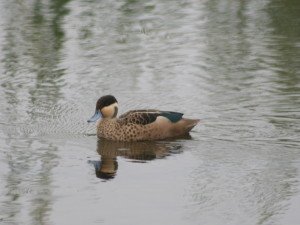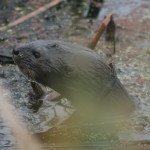Marievale Bird Sanctuary 2
The Marievale Bird Sanctuary is a Ramsar-site whose vast reedbeds and multitude of open pools are home to thousands of waterbirds.
Perhaps the most regal of its denizens is the African Marsh Harrier, an uncommon raptor that spends most of the day gliding over the pools and reedbeds on the hunt for rodents and other tidbits.
The African Marsh Harrier spends half of its day in the air and it likes to get an early start, so there it was as the sun was rising on Human Rights Day setting off on the breakfast run as it quartered low over the reedbeds.
My wife and I had a fine view of this long-winged beauty as we sat with our morning tea on the balcony of our little chalet overlooking the wetland. Blackcrowned Night Heron, Grey Heron, Greyheaded Gull, Redknobbed Coot, Cape Shoveler, Whitewinged Tern, Whitebreasted Cormorant, Cattle Egret, Spurwinged Goose, Greater Flamingo and Glossy Ibis were all easily spotted from our chalet on the edge of the water.
Soon we were on our way, heading for the causeway over the Blesbokspruit. This tarred section is a wonderful spot because there are pools of water close-by on both sides of the road, as well as vegetation right up to the causeway.
On the way there, Redshouldered and Longtailed Widows were busy in the grasslands, Southern Masked Weavers were almost ubiquitous and the sexually dimorphic Amur Falcons were dotted along the power and telephone lines along the road.
A lone Swainson’s Francolin was out and about in the brisk morning air – 15° was the temperature for most of the day – and popping into the Hadeda Hide en route produced Little Egret and Reed Cormorant.
Both Yellow and Blackthroated Canary were enjoying the seeds of the many Docks (Rumex spp) along the road, before we turned west on to the causeway and the waterbirds came thick and fast.
Common Moorhen were swimming around the pools, Pied Kingfisher were hovering and diving for breakfast, Cape Reed Warblers were singing merrily as they worked their way through the reeds, African Jacana were standing stately on the lilypads and Whitethroated Swallow, along with Brownthroated Martin, were zooming about.
Purple Gallinule and Malachite Kingfisher were also around and, as we exited the car and walked towards the Otter Hide, a sleek, sinuous dark head rose from the water – it could have been considered reptilian except it had whiskers, and a little black nose and eyes – a Spottednecked Otter just where it should be!
A handsome Hottentot Teal was also swimming around and Black Crake and African Darter were spotted too.
The open waters between the causeway and the picnic site also produced Redbilled Teal and Dabchick.
The northern section of Marievale takes you through productive wetlands on your left and open grassland on your right. Here Blackshouldered Kite and Hadeda Ibis were on one side of the car, while Squacco Heron, Little Bittern and Whiskered Tern flew around on the other.
Great Crested Grebe were swimming on the large expanse of water in front of the Duiker Hide, while the Flamingo Hide, back by the picnic site, also has a wide vista of open water and reedbeds in front of it. Large flocks of European Swallow are found here, but there were also Blackwinged Stilt and a rather tame African Reed Warbler, who was at much closer quarters.
Popping into the Hadeda Hide again on our way back to our chalet yielded the archetypal wetland Cisticola, the Levaillant’s. From regal raptors to skulking little LBJs, Marievale Bird Sanctuary has it all.
Sightings list
Grey Heron
Greyheaded Gull
Redknobbed Coot
Cape Shoveler
Whitewinged Tern
Whitebreasted Cormorant
Cattle Egret
Spurwinged Goose
Greater Flamingo
Glossy Ibis
Blackcrowned Night Heron
Egyptian Goose
Blacksmith Plover
Sacred Ibis
African Marsh Harrier
Redshouldered Widow
Longtailed Widow
Little Egret
Reed Cormorant
Laughing Dove
Rock Pigeon
Southern Masked Weaver
Yellowbilled Duck
Swainson’s Francolin
Stonechat
Cape Turtle Dove
Amur Falcon
Fiscal Shrike
Yellow Canary
Blackthroated Canary
Common Moorhen
Pied Kingfisher
Cape Reed Warbler
African Jacana
Whitethroated Swallow
Purple Gallinule
Cape Wagtail
Brownthroated Martin
Malachite Kingfisher
Spottednecked Otter
Hottentot Teal
Black Crake
African Darter
Greater Striped Swallow
Dabchick
Redbilled Teal
Blackshouldered Kite
Hadeda Ibis
Squacco Heron
Redeyed Dove
Redfaced Mousebird
House Rat
Little Bittern
Whiskered Tern
European Swallow
Great Crested Grebe
Blackwinged Stilt
African Reed Warbler
Southern Greyheaded Sparrow
Levaillant’s Cisticola



![IMG_0911[1]](http://kenborland.com/wp-content/uploads/2012/11/IMG_091111-e1356890012355-200x300.jpg)
